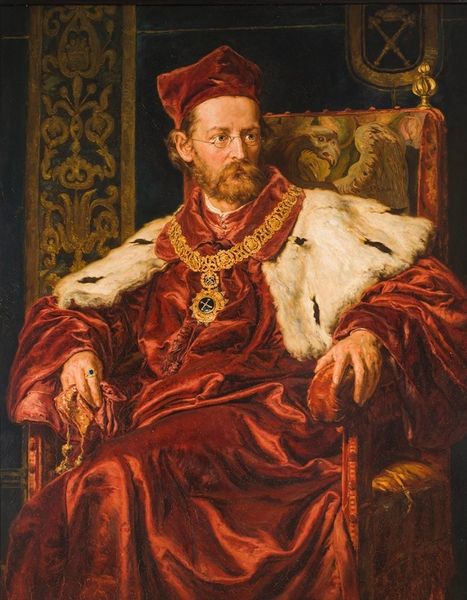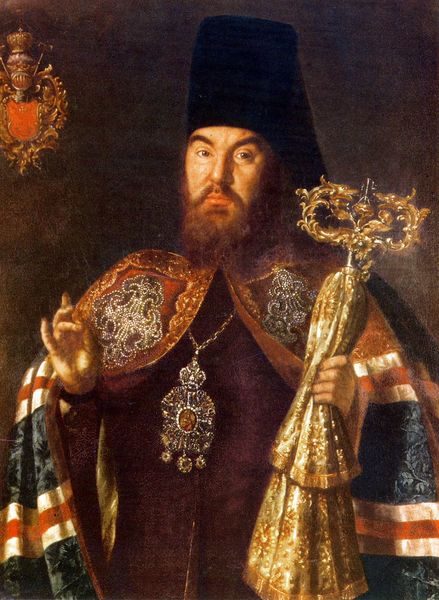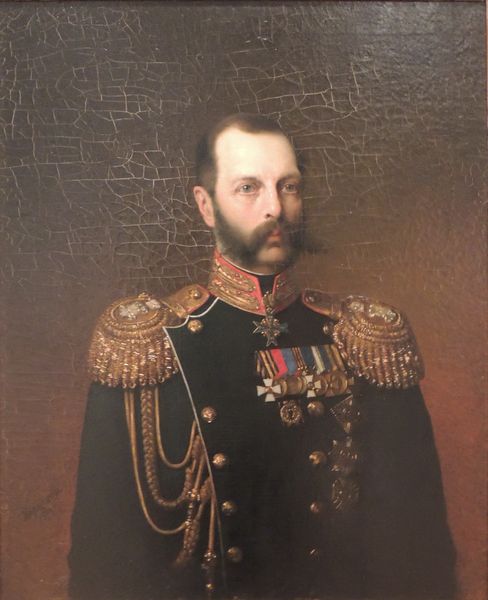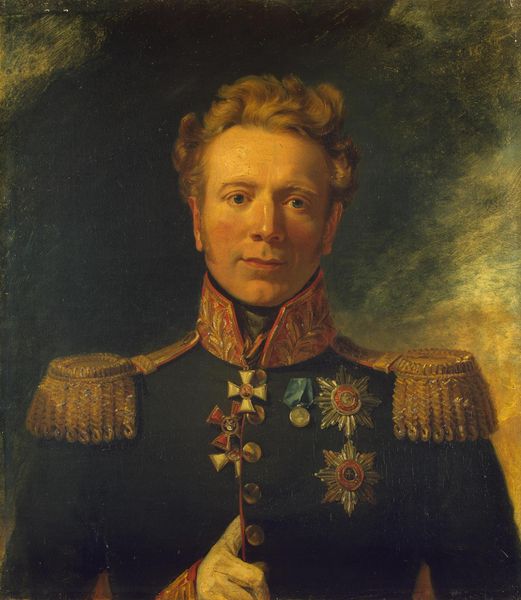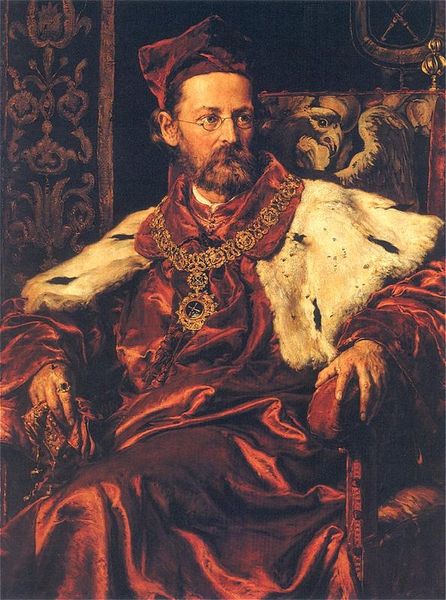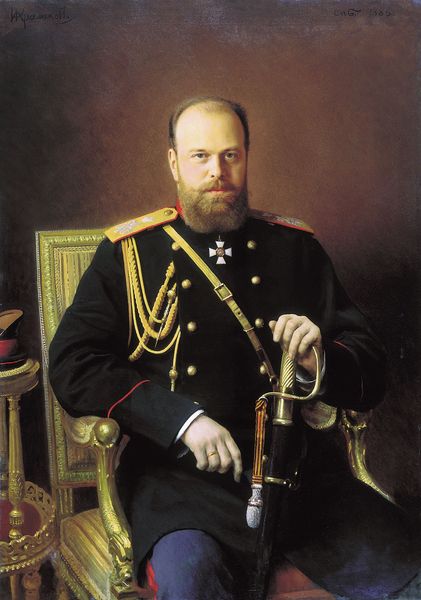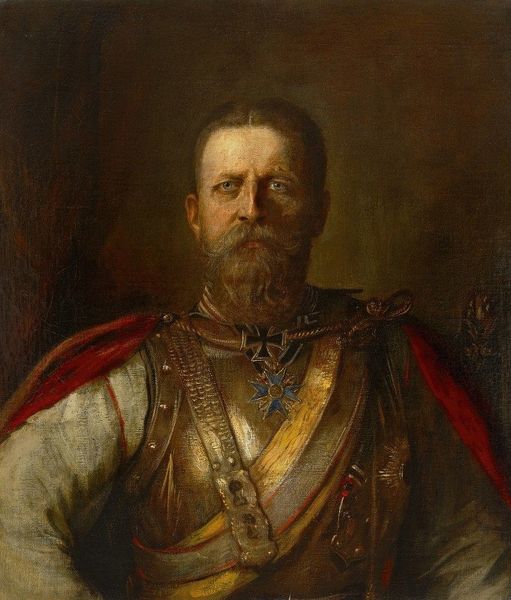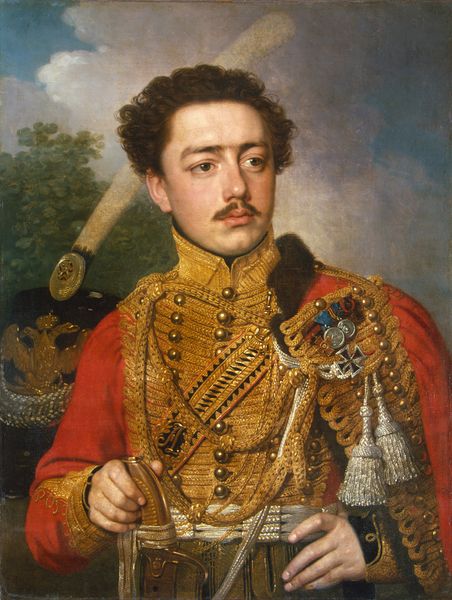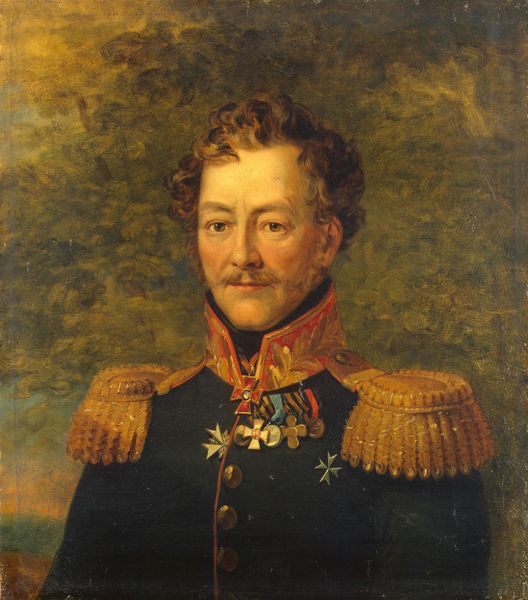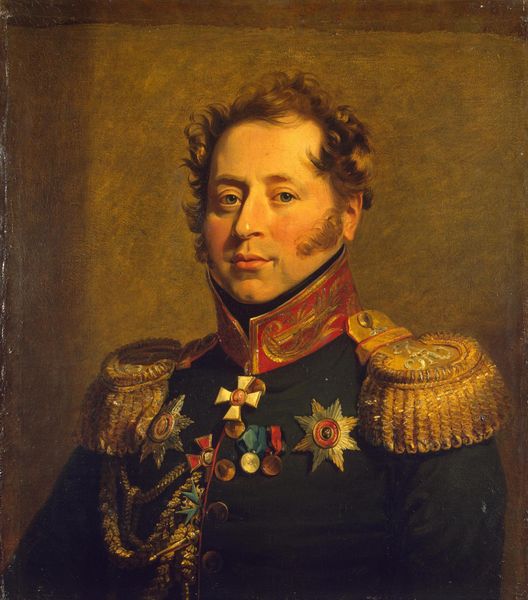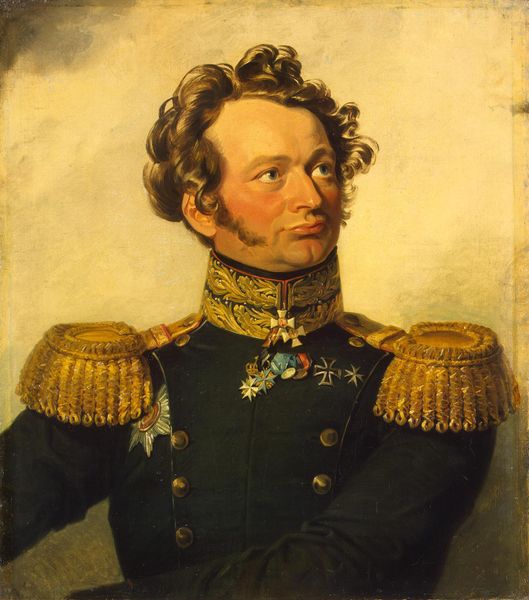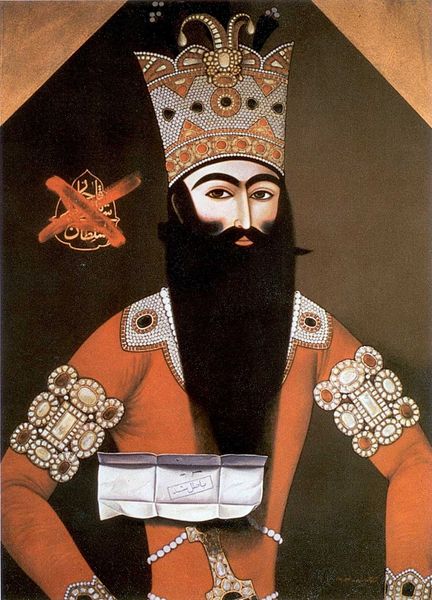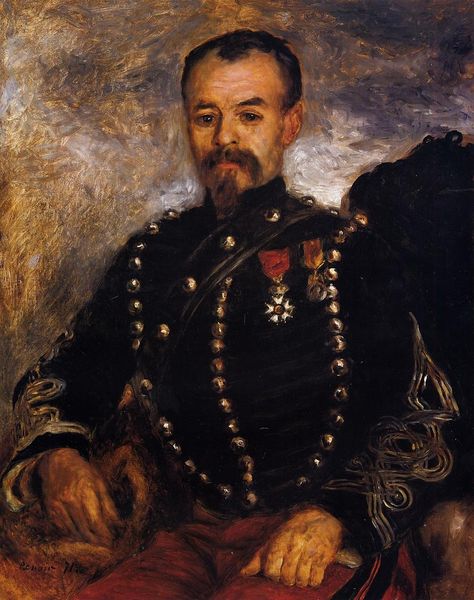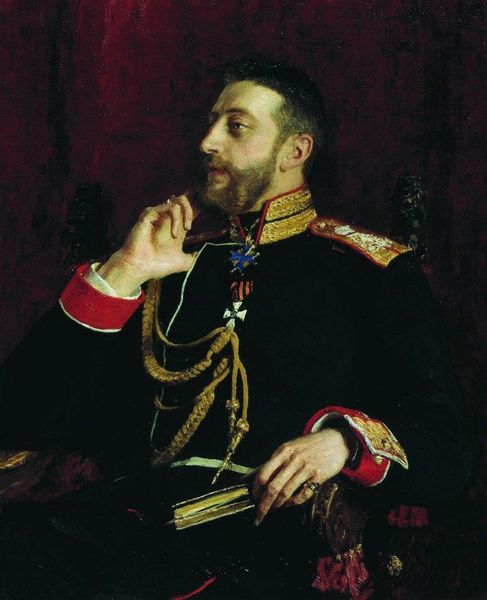
painting, oil-paint
#
portrait
#
painting
#
oil-paint
#
oil painting
#
russian-avant-garde
#
cityscape
#
history-painting
#
realism
Copyright: Public domain
Curator: Welcome. The artwork before us is titled "Tsar Nicholas II." It's an oil painting, completed in 1915 by Boris Kustodiev. Editor: My first thought is how surprisingly vulnerable he appears, set against that imposing Kremlin backdrop. It feels… incongruous. Curator: That's insightful. Kustodiev painted this during World War I, a turbulent time for the Romanov dynasty. Consider how the backdrop, representing Russia's historical power, is juxtaposed with Nicholas's seemingly melancholic expression. It speaks volumes about his leadership, perceived strength, and looming fall. Editor: The gold detailing of the Kremlin domes and Nicholas' uniform seems like a gilded cage, a symbol of privilege but also of immense responsibility and ultimately, entrapment. I wonder how viewers at the time would have reacted to seeing their Tsar portrayed this way. Were they critical? Did they find it sympathetic? Curator: Early 20th century viewers, familiar with formal royal portraiture, might have found the vulnerability quite striking. Although Kustodiev attempts to portray him as a leader, he cannot hide Nicholas's anxiety. This piece, created on the eve of revolution, definitely reflects growing uncertainty of the autocracy. Editor: The artist's choice to place Nicholas in front of the Kremlin, typically a symbol of enduring power, could be seen as both reverence and a subtle questioning of that very power. Knowing the historical context makes the image resonate differently, it foreshadows the imminent dismantling of Tsarist rule. It also humanizes Nicholas beyond his title and makes us confront him, the person. Curator: Exactly. By showcasing this complex portrait in a public space like a museum, we invite viewers to reassess preconceived notions of historical figures and power itself. How artistic representation intertwines with societal and political perspectives of both past and present. Editor: Yes. By placing this painting in a contemporary museum space we are engaging in a historical dialogue. Highlighting an intimate moment within political turmoil for viewers today offers the opportunity to dissect historical frameworks and address modern intersectional interpretations, looking through a different lens, informed by our own social discourse. Curator: Indeed. This viewing compels us to reflect on the fragility of leadership, of legacies, and of nations. Editor: A vital question about leadership: what does it mean to maintain privilege and control amid widespread societal change?
Comments
No comments
Be the first to comment and join the conversation on the ultimate creative platform.
